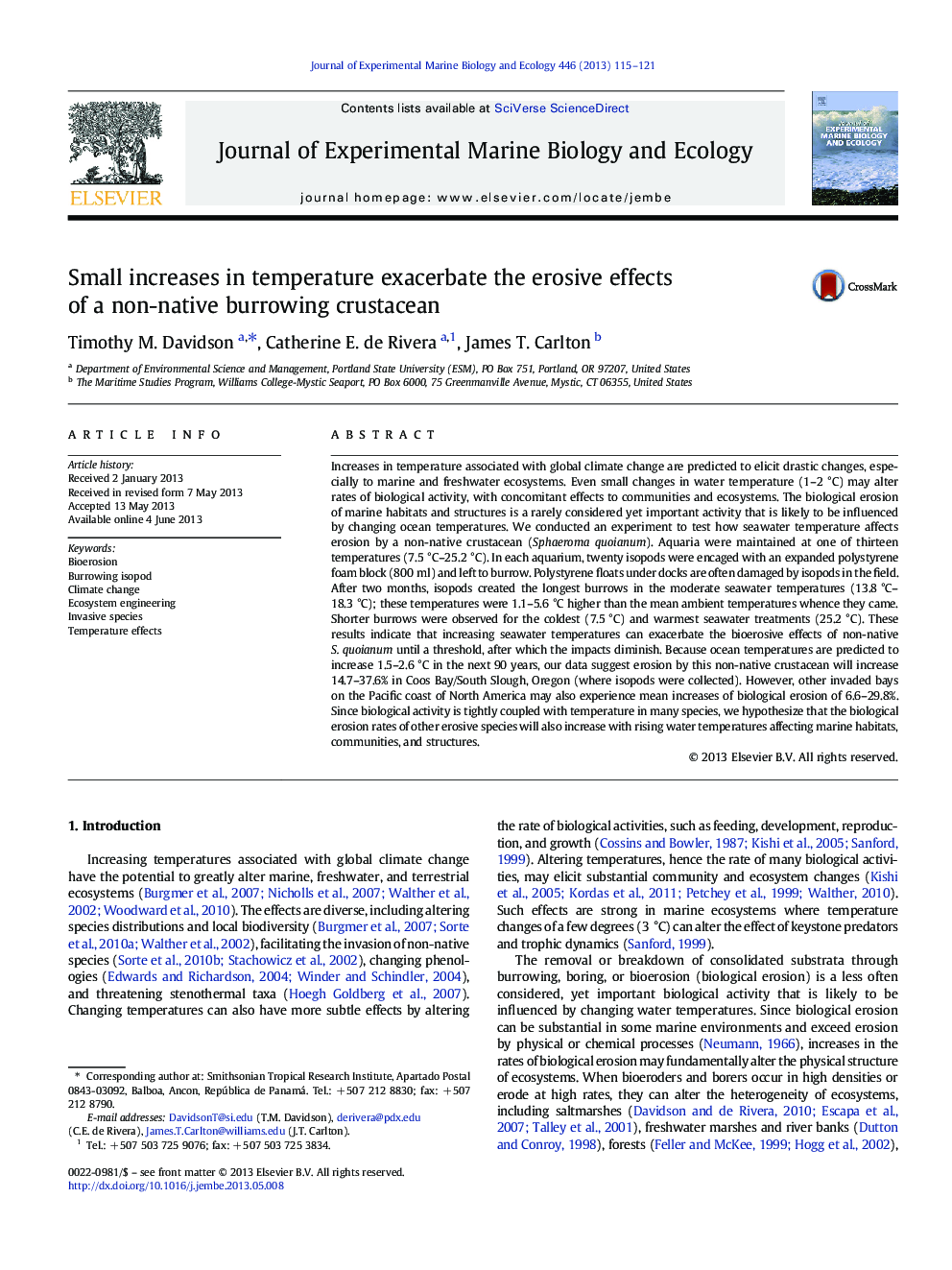| کد مقاله | کد نشریه | سال انتشار | مقاله انگلیسی | نسخه تمام متن |
|---|---|---|---|---|
| 4395713 | 1618429 | 2013 | 7 صفحه PDF | دانلود رایگان |

• Seawater temperature strongly influenced biological erosion by a non-native isopod.
• Temperatures 1.1–5.6 °C above ambient conditions elicited maximum erosion rates.
• Future ocean warming (+ 1.5–2.6 °C) is predicted to increase erosion by this species.
Increases in temperature associated with global climate change are predicted to elicit drastic changes, especially to marine and freshwater ecosystems. Even small changes in water temperature (1–2 °C) may alter rates of biological activity, with concomitant effects to communities and ecosystems. The biological erosion of marine habitats and structures is a rarely considered yet important activity that is likely to be influenced by changing ocean temperatures. We conducted an experiment to test how seawater temperature affects erosion by a non-native crustacean (Sphaeroma quoianum). Aquaria were maintained at one of thirteen temperatures (7.5 °C–25.2 °C). In each aquarium, twenty isopods were encaged with an expanded polystyrene foam block (800 ml) and left to burrow. Polystyrene floats under docks are often damaged by isopods in the field. After two months, isopods created the longest burrows in the moderate seawater temperatures (13.8 °C–18.3 °C); these temperatures were 1.1–5.6 °C higher than the mean ambient temperatures whence they came. Shorter burrows were observed for the coldest (7.5 °C) and warmest seawater treatments (25.2 °C). These results indicate that increasing seawater temperatures can exacerbate the bioerosive effects of non-native S. quoianum until a threshold, after which the impacts diminish. Because ocean temperatures are predicted to increase 1.5–2.6 °C in the next 90 years, our data suggest erosion by this non-native crustacean will increase 14.7–37.6% in Coos Bay/South Slough, Oregon (where isopods were collected). However, other invaded bays on the Pacific coast of North America may also experience mean increases of biological erosion of 6.6–29.8%. Since biological activity is tightly coupled with temperature in many species, we hypothesize that the biological erosion rates of other erosive species will also increase with rising water temperatures affecting marine habitats, communities, and structures.
Journal: Journal of Experimental Marine Biology and Ecology - Volume 446, August 2013, Pages 115–121